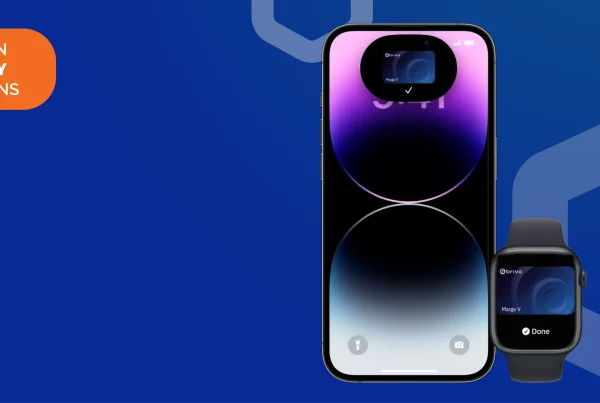PROXIMITY CARD READER – Access control is one of the most important aspects of physical security. Confidential assets can be compromised if they are improperly handled, which can have a negative impact on an organization. According to Verizon’s 2022 Data Breach Report, poor access management encourages human-based attacks and errors, which accounted for 82% of data breaches in 2022.
Proximity card reader systems are a typical type of access control reader solution seen in businesses and other public spaces. So what is a proximity reader, and how do proximity cards operate? How can proximity reader access control technology protect your facility?
This article will cover proximity readers, proximity access control systems, various door key card reader configurations, and other factors you should be aware of before installing these devices in your building.

What are proximity card readers?
A proximity card reader is a crucial component of an access control system. When a token or proximity card enters the detecting range, these touchless devices read its credentials.
What is a proximity card, and how does it differ from other access cards? Any kind of card or keychain that stores a user’s credential information is referred to as a proximity card. Depending on how the proximity card reader system is set up, proximity cards might not even need to make physical touch with the reader to unlock a door. Fundamentally, as long as the card is within the detection range, the card reader system will scan it and provide access to approved individuals.
Proximity card readers have different detection ranges depending on the system being used, however depending on where the installation is, proximity cards typically only need to be a few inches or up to a few feet away from the reader for access to be given.
Access Your Office with Smartphone
Discover why thousands of companies have Access Control System
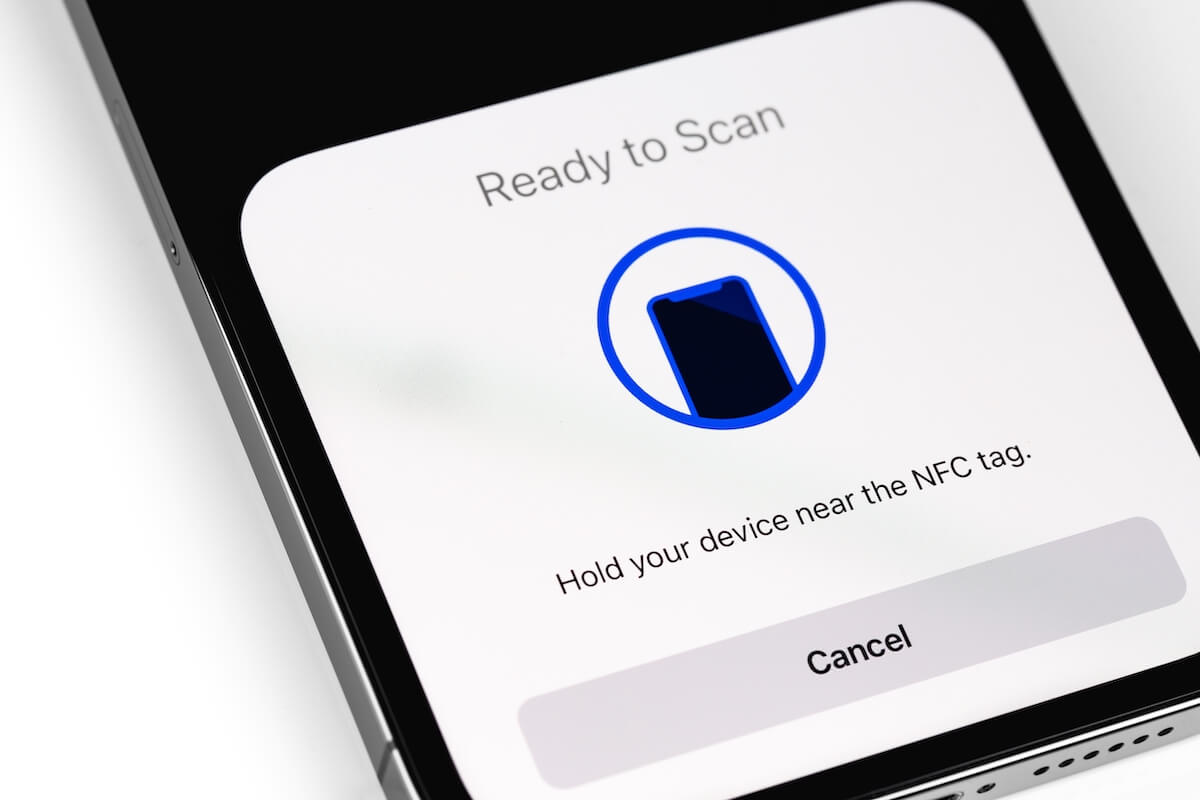
How do proximity badge and card readers work?
One of the three elements that make up a proximity access control system is a proximity reader. The proximity card itself, as well as an access controller and network control software, are the other two elements that make up the larger proximity card access control system.
The proximity badge communicates with the prox reader via an embedded antenna with RFID technology or a Near-Field Communication (NFC) tag and user credentials.
The proximity reader, on the other hand, emits an electromagnetic field that extends outward in a wide radius. A card will absorb energy and turn it into electricity as soon as it enters the detection radius. This will activate the card’s circuit and start sending data to the proximity reader access system. The proximity card access controller will receive the data from the reader and confirm the user’s identity. The reader will release the lock and provide the user access if the card has received system approval. The entry will stay locked if unlawful access is discovered.
In essence, proximity card access control systems run on electricity. Hence, the most important question is: Will it function if there is a power outage? Depending on the electric lock you employ and whether you’ve installed a backup power option, proximity reader access control systems could be able to operate during power outages. When installing a proximity reader, first determine whether your entry uses fail-safe or fail-secure locks. Your installation can advise whether your proximity card reader systems require a backup or failover power source based on the power source.
Cloud Based Access Control
Learn about cloud based access control system and its futures.
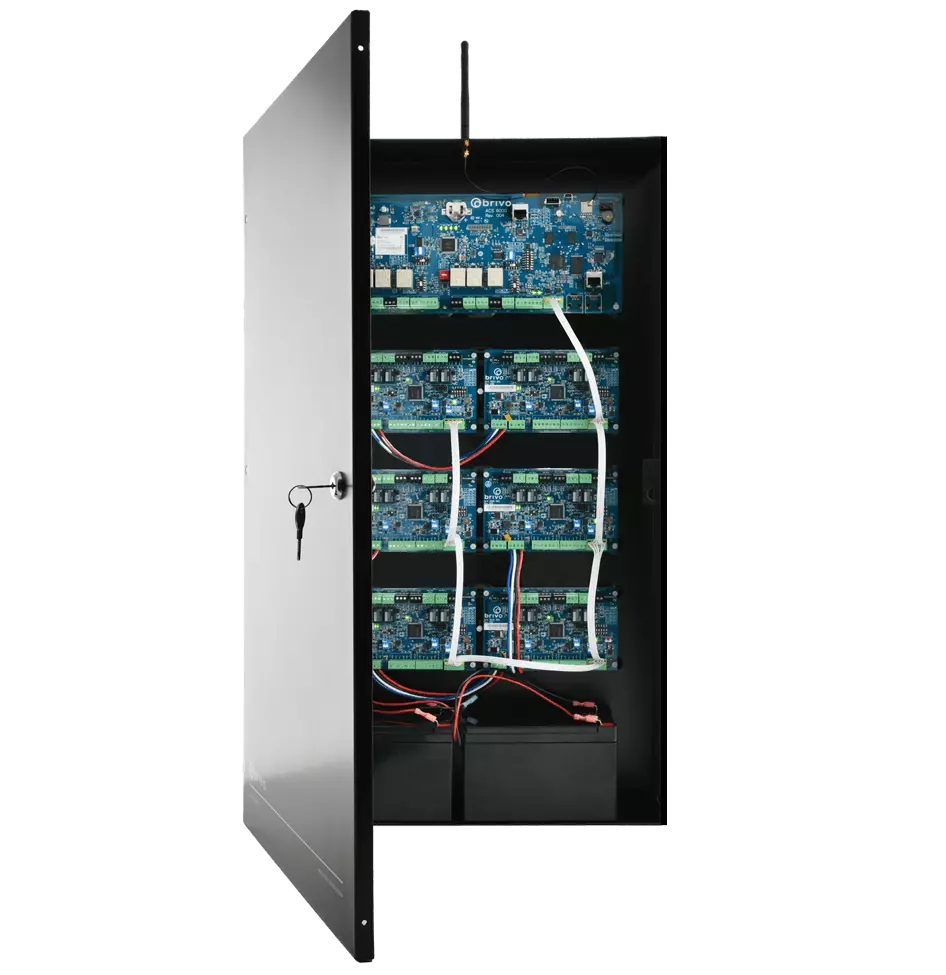
Types of proximity card readers
Proximity card readers may appear similar at first glance. Yet, the operation of these smart card readers varies depending on the power source and connectivity. While comparing proximity access control systems, you may also see them referred to as “prox readers” and “prox cards,” although the technology is the same. The four different types of proximity reader access control systems are listed below.
Wired proximity readers
In business establishments, this proximity reader is most frequently employed. Because they communicate using a protocol called Wiegand, wired proximity scanners often support some combination of RFID, Bluetooth, or NFC formats and are compatible with practically any access control system. Given that the Wiegand protocol has been in use since 1974 and has numerous weaknesses that can be used against it, this compatibility feature can also pose a physical security concern.
Nonetheless, there are ways to guard against attacks even though a wired proximity card reader employing this protocol may be vulnerable to hacking. A proximity card reader system with sophisticated end-to-end encryption and added tamper resistance is one approach to do this.
Wireless proximity readers
Wireless proximity readers, as their name suggests, are battery-powered, thus there is no need for intricate wiring. When it would be costly to wire readers in every door, this kind of reader is frequently employed as part of hotel security systems and apartment building security systems. To communicate with the main control panel, they are typically linked to a wireless repeater. While they make installation easier, they must be regularly examined to make sure the door badge readers still have enough battery to work as intended.
standalone proximity readers
This kind of proximity reading system is decentralized and does not have a control panel. As a result, they lack a data connection and have less capability than other types of readers. They are frequently placed in a one-off type installation scenario and cannot be controlled or programmed remotely.
Standalone proximity readers don’t have a central system that manages the reader; instead, you must set a PIN number for each individual on each reader you have. To test and activate a card, you must individually set up each reader. Small facilities with few entrance points may benefit from these proximity card readers.
proximity readers with IP connectivity
These card readers are the most sophisticated of all proximity readers. They may easily be incorporated into your IT systems via Ethernet or PoE, giving you access to an automated, adaptable security system. They are also more secure because they are not directly connected to an access controller. This ensures that malicious parties attempting to access your facility cannot intercept the line.
To protect the security of your building, IP-connected access readers must have high-level encryption and adhere to strict cybersecurity regulations. Your entire facility may be in danger if your IP badge reader system is compromised.
Join UPS Stores Using Access Control
With Cloud Based Access Control, UPS Stores can regulate and track who enters its facility for PO Boxes.
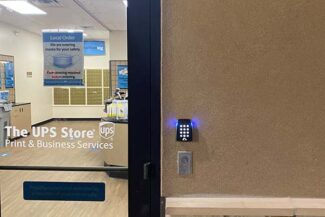
Benefits of using proximity access control and badge readers
Why should your facility think about installing a proximity card reader system? Here are some of their advantages:
Improved security: The ease with which a key can be duplicated and a lock picked is a serious issue with conventional lock and key systems. Because of this, many establishments have stopped utilizing this and switched to keyless door entry systems like proximity cards for access control. Because they provide superior protection, accountability, and security, proximity card access systems are currently used in airports, schools, hotels, retail establishments, and more.
Simple integration: Many proximity readers may be readily connected with the full security system if you already have one.
Cards used in proximity card systems do not require direct physical touch with the reader in order to function. This cuts down on the amount of time it takes to open a door, making it easier for you and your staff to enter and exit the building.
A proximity badge reader can assist reinforce your physical security and streamline corporate operations. Proximity card readers can ease the procedure for your business building or office spaces because you can grant multiple levels of access to users.
Dependable and less susceptible to wear and tear: This technology works without physical touch between the card and the reader. As a result, locks that use a lock and key or other forms of locks, like PIN pads, are not subject to the same level of wear and tear as proximity card reader systems.
Proximity readers are typically inexpensive. Once installed, they often require little to no maintenance and don’t have any easily breakable moving parts.
Activity that can be audited: One of the main advantages of proximity card reader systems is the data they generate, which enables organizations to more effectively keep tabs on building access activities. You can’t tell who or when the door was opened with a typical key. But, with proximity access card readers, data is received each time a person uses their proximity card and may be viewed in the management software’s activity log.
Commercial security cameras for business
- Business security cameras with enhanced coverage and IR that improve situational awareness
- Video analytics with AI to find incidents
- Hours of video are easily sorted through by Video Search to locate a suspicious person or vehicle.
- Integrates with third-party ONVIF® compliant platforms
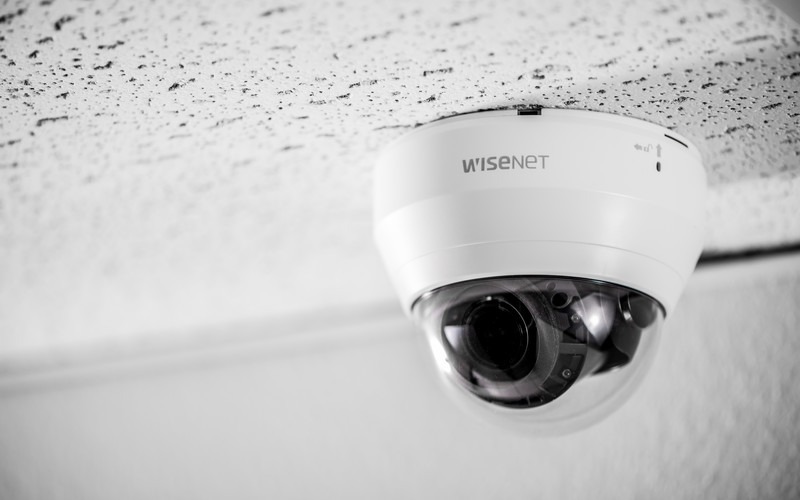
Security pitfalls of proximity access control and card readers
You must make sure your proximity access control is trustworthy and secure, just like any other security system. Although proximity card readers are intended to increase the security of your building, some of them employ technology that has been in use for many years. This implies that they have exploitable known flaws. Amazingly, these vulnerabilities are simple to find online, making it simple for anyone with bad intents to take control of your device.
The following are some drawbacks of employing a proximity card reader for entry:
The reader can detect neighboring proximity access cards from a distance known as the detection radius. Your proximity card reader system’s efficiency and security depend heavily on this radius. For instance, to prevent tailgating incidents, doors and turnstile gates should have a shorter read range. However for parking garages, the radius should be a little bit larger to guarantee that all vehicle sizes can access the facility without running into any issues.
Vulnerable backend hardware One of the most common targets for fraudsters looking to steal sensitive data is a proximity badge system. Even if there are sophisticated proximity readers that provide a more secure backend, you will still encounter security flaws due to backward compatibility, such as having a security system that utilizes antiquated legacy backend hardware. As an additional layer of defense against hardware hacking, make sure you utilize a system with end-to-end encryption at every level of communication.
There are no fail-safes or backups: Electricity is required for a proximity reader to work effectively, as was already established. To make sure the access control proximity reader is operational in the event of a power or internet interruption, you must have a backup power source. If you don’t have one, you’ll either have to keep people out of the building or have all the door locks unlocked. To prevent thieves from taking advantage of this weakness, make sure you have a backup battery or other power source.
Hackable local storage: Certain proximity card readers store data locally, which can be easily hacked by malicious parties. Criminals that break into your local storage can access your complete system and put your facility at risk. If you plan to use local storage for proximity card reader devices, be careful to implement strong security measures and properly encrypt your storage.
Key cards and key fobs are frequently utilized access methods for most firms, hence some people have figured out how to duplicate them. This is especially true for those utilized with low-frequency HID proximity card and badge readers. Choose a proximity card with a digitally signed identifier that enables robust encryption and security, such as the DESFire EV3 128-bit AES cryptographic proximity access cards.
Absence of functionality or credential support: Although proximity card reader technology might be what you’re searching for right now, security is a dynamic field. You don’t want to have to replace the complete card reader system in the future if present tenants or workers decide to switch to more contemporary access techniques, such mobile credentials. To prevent this hassle, search for proximity card readers that accept many technologies, allowing you to utilize a variety of credentials on the same scanner.
Don’t risk legal
responsibilities.
Contact us right now to set up a consultation with one of our qualified security consultants. We will assist you in seamlessly navigating the complicated terrain of video surveillance laws. Your company deserves the greatest protection possible!
What industries should use proximity card readers?
Proximity card readers can be useful for any facility or business, regardless of size. Most industries and corporations employ them as part of their overall physical security since they can be a cost-effective solution to secure a building. The following are some sectors that proximity card access control systems can considerably benefit from:
Hotels
Buildings for businesses
multi-tenant residential
parking structures
Airports
Governmental facilities
Correctional facilities
Schools \sStadiums
Logistics
Factors to consider when choosing a proximity card reader
Physical safety is a critical issue. Hence, before selecting a proximity reader, you should thoroughly consider what your facility requires. To make sure that your proximity card system and the reader you’ll select are compatible, it’s typically preferable to speak with a security specialist. When installing a proximity access control system, you should also make a list of the functions you want it to have. Here are some things to think about if you’re not sure what to look for in a reader:
wiring design
Be sure the new proximity reader you want to upgrade to is compatible with your current wiring layout if you already have a system in place. It can take a lot of time and money to rip out and replace your old wiring with new hardware. If your building also uses a common wiring architecture, some proximity scanners can be installed quickly and easily. Some, on the other hand, employ a different architecture, so be sure to confirm that the desired proximity reading system is compatible with the current infrastructure.
If your building can’t withstand a lot of wiring, it might be advisable to stick with a wireless proximity card reader instead. However, keep in mind that this sort of door card reader takes more maintenance due to the manner it is powered, so only choose this type of system if you can properly maintain it.
door lock mechanism
Electric locks are used by proximity card readers to safeguard entrances. You must have backup power to support any sort of business door lock you choose in order to keep your facility secure. Nevertheless, not all door locks and proximity readers work together. To get the most out of your proximity reader access control system, it’s advisable to consult a security expert before choosing what door lock mechanism to employ.
Location of installation
What kind of reader you need may depend on the area where you wish to put a proximity card reader. While small proximity readers might be too stealthy for a big parking lot, certain readers might not fit through a small opening. Also, you must look at the reader’s detection range. A reader with a broader read range for a narrow entryway, for example, could be a security issue for your building. Inconveniences like lockouts can result from a shorter scan range for a larger entrance.
Some readers may appear big and out of place if you care about style and aesthetics. Nonetheless, a well-designed proximity reader must still perform consistently. Think about whether you want the proximity readers mounted flush with the wall or if you require specific housing for proximity reader systems installed outside.
Cost
You should have a budget in mind before you start looking around to make sure you won’t spend more than you can afford. The number of proximity readers you need for your facility, the infrastructure you already have, the kind of system and credentials you want to use, and other variables can all have an impact on the price of a proximity access control card reader system. You should also take into account continuing expenses. Key cards, for instance, can be costly to maintain, especially if you need to acquire replacement cards frequently.
Choose a product that is made to be future-proof if you want to keep the cost down. Certain readers can support multiple entry methods, such as the use of mobile credentials in place of cards and badges, which can cut down on maintenance expenses. In order to simplify administration and security operations for your company, you must also make sure that it can be integrated with other physical security systems.
Have questions? We can help
Our security experts can help you implement the right security system for your business.



